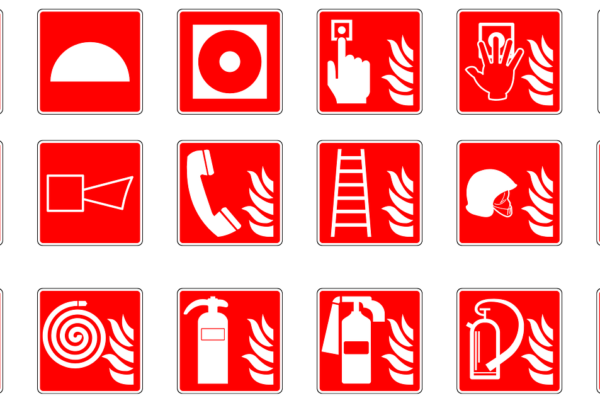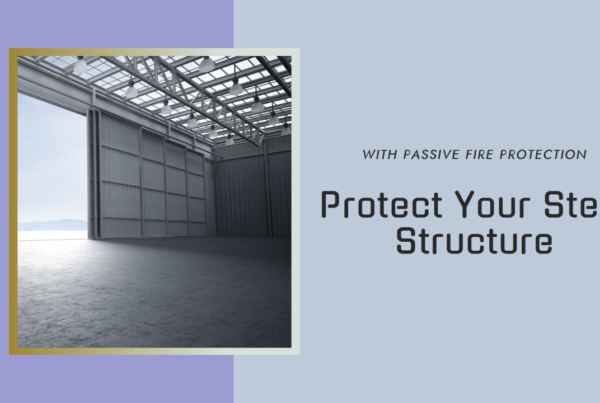1. General
This article will explain and interpret the requirements for the installation, inspection, and testing of dampers. The focus will be on Routine Service of Fire and Smoke Dampers per AS 1851. Other types of dampers are not included in this article.
2. AS 1682.1, AS 1682.2, and AS 1851 Requirements
i. AS 1682.1 Specifications
AS 1682.1 highlights the specifications for fire and smoke dampers. According to this standard, dampers shall have the following information on the label:
– Manufacturer’s name or trademark
– Model number
– Fire resistance level (FRL)
– Type of damper
– Suitability for use in aggressive environments
– Orientation
– Direction of airflow during certifying tests
For aggressive environments, the materials used must meet AS 4312 requirements for corrosivity. This standard also mandates that the activation of dampers must have thermal linkages as per AS 1890 or UL 33, in addition to any mechanical activation.
Performance testing as per section 3 of this standard explains allowable variations from the tested prototype. For example, the face area shall not exceed that of the tested prototype. The maximum allowed dimensions must comply with the prototype dimensions unless agreed upon with the testing authority. Installation variations do not permit dampers tested on wall elements to be used for floor elements.
ii. AS 1682.2 Installation
This standard specifies the requirements for the selection, installation, and commissioning of dampers. Generally, insulation criteria do not apply to dampers except as required by AS 1668.1. According to AS 1668.1, insulation criteria are not required for dampers in the following circumstances:
1) Vertically mounted – Wall fire dampers:
– For shaft-mounted dampers
– For fire dampers connected to ducts with a total length of 2m
2) Horizontally mounted – Floor fire dampers:
– Fire dampers at the bottom of shafts
– Fire dampers mounted at the top of shafts connected to ducts of 2m length, insulated with non-combustible material
– Fire dampers mounted in floors without shafts and connected to ducts of 2m length, insulated with non-combustible material
According to this standard, dampers shall not have mounting sleeves extending more than 150mm from the face of the wall, except for motorized dampers where an allowance of 250mm is permitted. Breakaway connections must comply with appendix C of this standard, except where the damper is connected to a riser shaft containing only building services. This standard allows the installation of oversized flanges if the penetration size exceeds normal limits. In this case, the damper must be centered within the penetration, with additional packing around the damper.
iii. AS 1851 Inspection and Testing
This standard is considered the bible of fire protection maintenance and inspection processes. Although there are many sections of this standard, section 13 deals with the inspection requirements for fire and smoke dampers. These standard mandates that fire and smoke dampers shall be inspected annually.
3. Yearly Inspection of Fire and Smoke Dampers
AS 1851 specifies that fire and smoke dampers must be inspected yearly. Clause 13.4.1.4 highlights the requirements for routine service and inspection of dampers on a yearly basis. If a significant number of dampers (10-20%) fail any inspection, all the dampers in that particular building must be inspected within the next twelve months. Only 20% of the total dampers in a building shall be inspected yearly, ensuring complete inspection over a cycle of five years. Table 13.4.14 details the required inspection. The notes to this table are of high importance and contain substantial information. According to this table, all fusible links must be replaced every 20 years. The corrosion of angles around the damper requires special attention during routine service.
4. Testing and Record of Smoke Dampers – Yearly
Clause 13.4.2.9 requires yearly testing and recording of smoke dampers as per appendices H and I.
5. Required Skills for Routine Service and Testing of Dampers
Appendix H specifies the skills required to perform the routine service of fire dampers, including testing and recording. It states that being a mechanical engineer or having five years of experience, coupled with an understanding of Australian Standards and National Construction Codes, is necessary for individuals performing these tasks.
6. Summary
Routine service, along with testing of smoke dampers, is of paramount importance for effective fire safety in buildings. Cybil Consults, your trusted partner for comprehensive solutions to fire protection systems, ensures that fire and smoke dampers are inspected, tested, and recorded in compliance with AS 1851 section 1. Our required experience and skills make Cybil Consults the right choice for any building owner.






